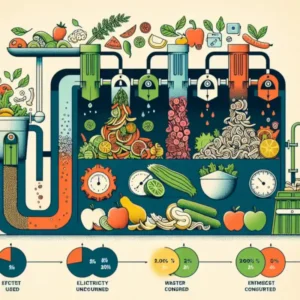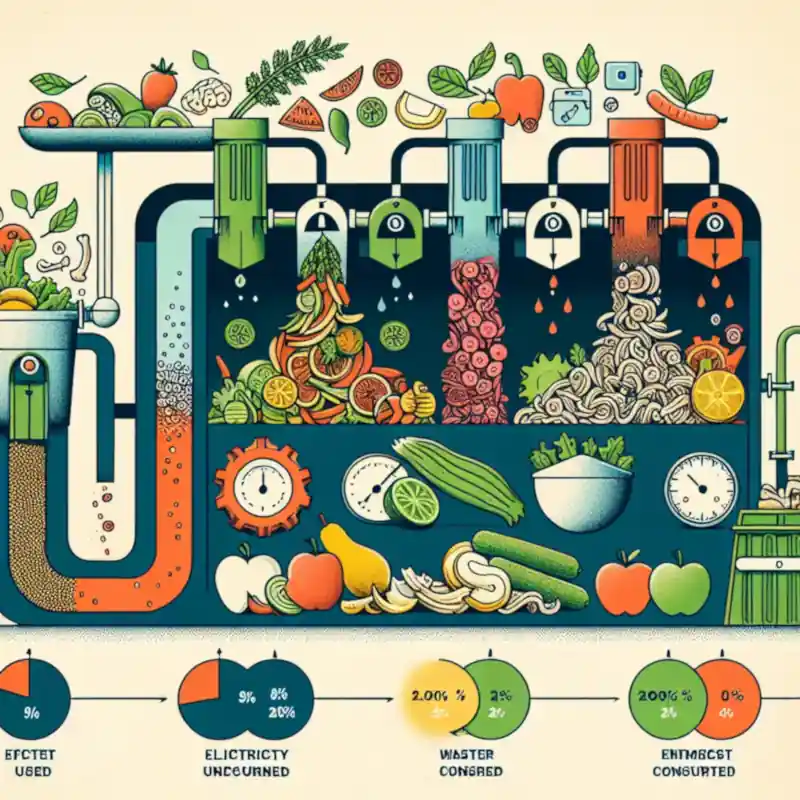Efficiency metrics play a crucial role in evaluating and improving the processes involved in food waste management. These metrics are essential tools that provide quantitative data about the efficiency and effectiveness of waste processing systems, thereby aiding in the identification of areas that need improvement.
One of the most commonly used metrics in food waste processing is the conversion rate. This metric measures the amount of waste that is converted into useful byproducts such as compost or bioenergy. A high conversion rate indicates an efficient system that maximizes use of resources while reducing waste.
Another key metric is energy recovery efficiency, which calculates the amount of energy recovered from food waste. This can be done through different methods such as anaerobic digestion or incineration to produce heat, electricity or fuel. Higher energy recovery rates imply better utilization of wasted food’s potential energy.
The carbon footprint is also another important metric. It measures the total greenhouse gas emissions caused by food waste processing. Lower carbon footprints represent higher efficiency as it indicates less environmental impact.
Operational efficiency is also considered, which measures how well a food waste processing facility operates in terms of processing time, labor requirements, and cost-effectiveness. This includes factors like system downtime, maintenance costs, and processing speed.
Furthermore, contamination rate is another vital metric that assesses the percentage of non-organic materials present in collected food waste such as plastics or metals. A low contamination rate suggests efficient separation methods at source and during sorting process at facilities.

Finally, customer satisfaction can be used as an indirect measure of efficiency. Happy customers indicate a successful service with effective collection systems and minimal disruption.
In conclusion, these metrics offer valuable insights into different aspects of food waste processing efficiency – from operational aspects to environmental impacts and customer satisfaction levels. By analyzing these metrics, facilities can identify areas for improvement to optimize their operations and enhance their performance towards sustainable practices.
However, it’s important to remember that while these metrics are useful tools for assessing efficiency, the effectiveness of a food waste processing system should not be measured by a single metric. Instead, a holistic approach that takes all metrics into account will provide the most accurate picture of a system’s overall efficiency.

